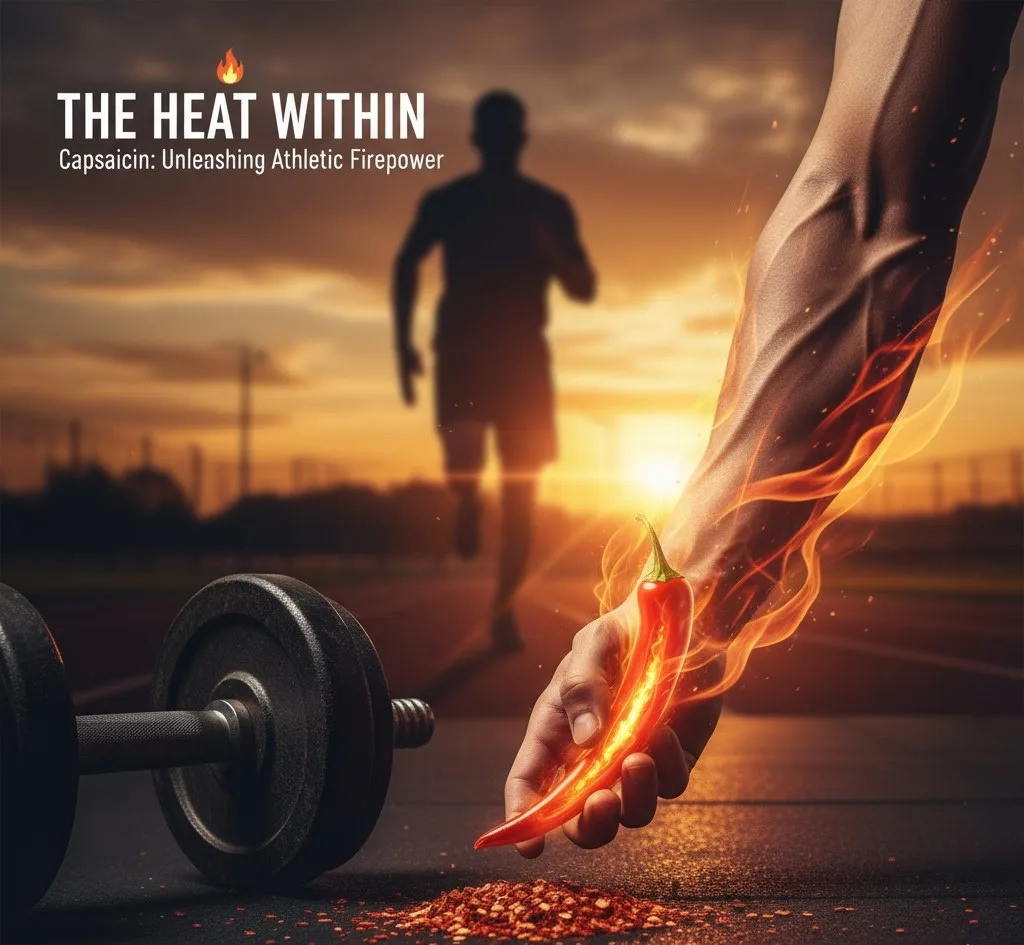Red chili peppers, and their main active component capsaicin, are most famous for the burning sensation they deliver. However, this fiery compound is increasingly becoming recognized in sports nutrition for its potential to boost performance and accelerate recovery in athletes. Beyond its traditional roles in metabolism and appetite control, capsaicin offers several key benefits relevant to the demands of intense training.
Performance and Anti-Fatigue Effects
One of the most intriguing benefits of capsaicin for athletes is its potential to improve endurance and reduce the perception of fatigue.
-
Reduced Perceived Exertion (RPE): Research suggests that acute capsaicin supplementation may help athletes feel less tired during demanding workouts. By activating the TRPV1 receptors—the same ones responsible for the "heat" sensation—capsaicin can modulate the body's pain and fatigue signaling pathways. This essentially allows athletes to push harder or longer before feeling the need to stop.
-
Enhanced Endurance: Studies on athletes performing high-intensity intermittent exercise, such as repeated sprints or middle-distance running, have shown that capsaicin can increase the time to exhaustion. This is a significant ergogenic (performance-enhancing) effect, allowing for a greater training load and better competition results.
-
Metabolic Boost: Capsaicin has been shown to increase thermogenesis (heat production) and energy expenditure. For endurance athletes, this can be linked to enhanced fat oxidation (fat burning), potentially sparing glycogen stores and improving fuel efficiency over long durations.
Accelerated Recovery and Soreness Relief
For athletes, consistently pushing limits means managing muscle soreness and inflammation is crucial. Capsaicin provides dual action in this critical recovery phase.
-
Mitigating DOMS: Delayed-Onset Muscle Soreness (DOMS) is a common issue following intense exercise. Capsaicin has demonstrated anti-inflammatory properties by helping to inhibit pro-inflammatory markers. By reducing the overall inflammatory response to exercise-induced muscle damage (EIMD), capsaicin can help mitigate DOMS and restore muscle function faster.
-
Analgesic Effect: The compound is widely used in topical creams and patches for its pain-relieving (analgesic) qualities. When applied to the skin, it works by desensitizing the local sensory nerves. This local effect can provide targeted relief for sore joints and muscles, which is invaluable for a quick return to training.
-
Improved Blood Flow: Capsaicin's interaction with the vascular system can lead to increased nitric oxide (NO) bioavailability, which helps dilate blood vessels. This improved blood circulation delivers more oxygen and nutrients to active and recovering muscles, while also helping to clear metabolic waste products like lactate, further speeding up the recovery process.
Conclusion for Sports Nutrition
While chili peppers are a simple food source, the capsaicin they contain holds promise as a natural, nutritional strategy for competitive athletes. From reducing the feeling of fatigue during a race to speeding up recovery post-training, incorporating this "heat advantage"—either through dietary means or targeted supplementation—offers a compelling way for athletes to optimize their training and performance.

